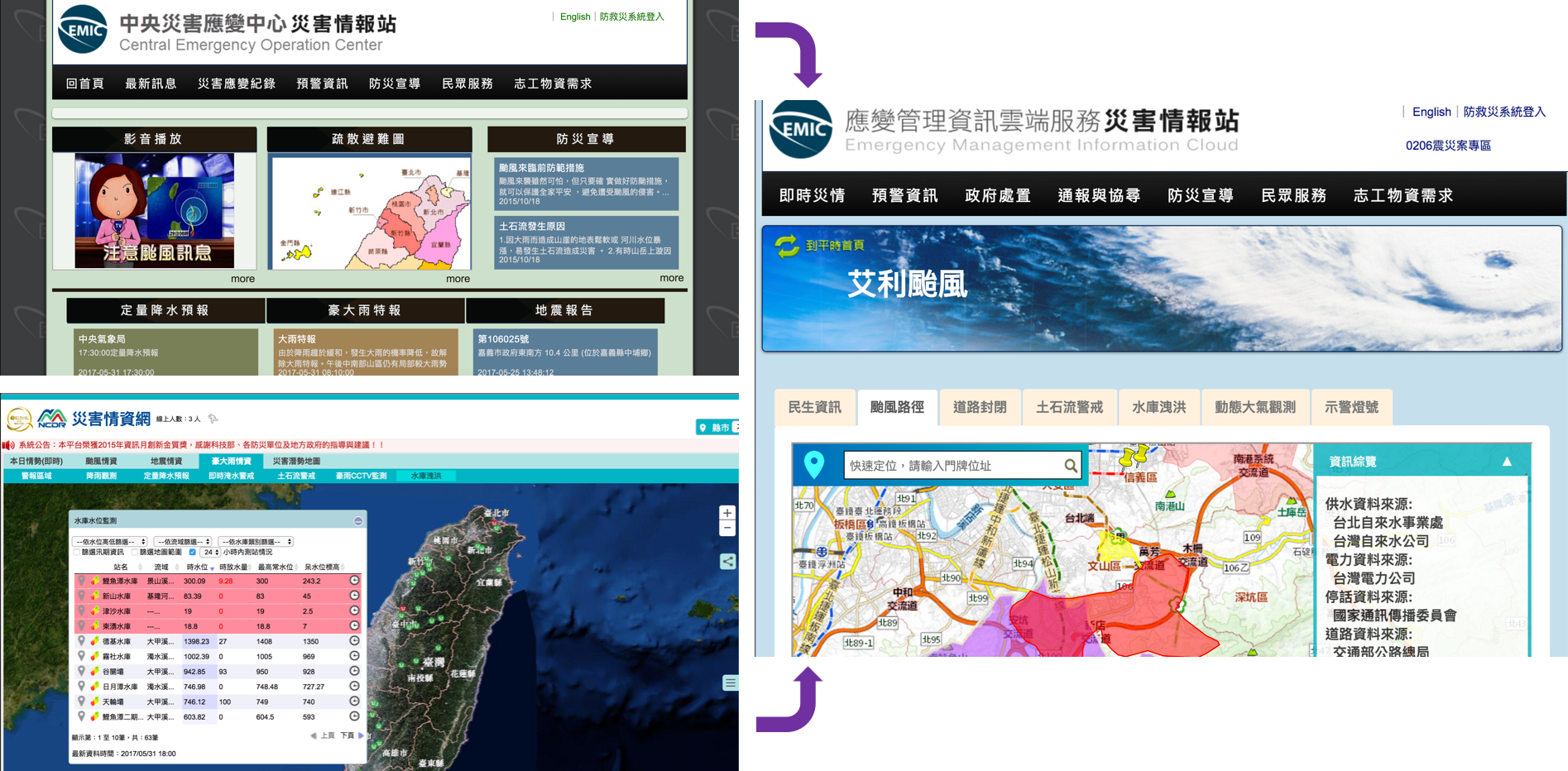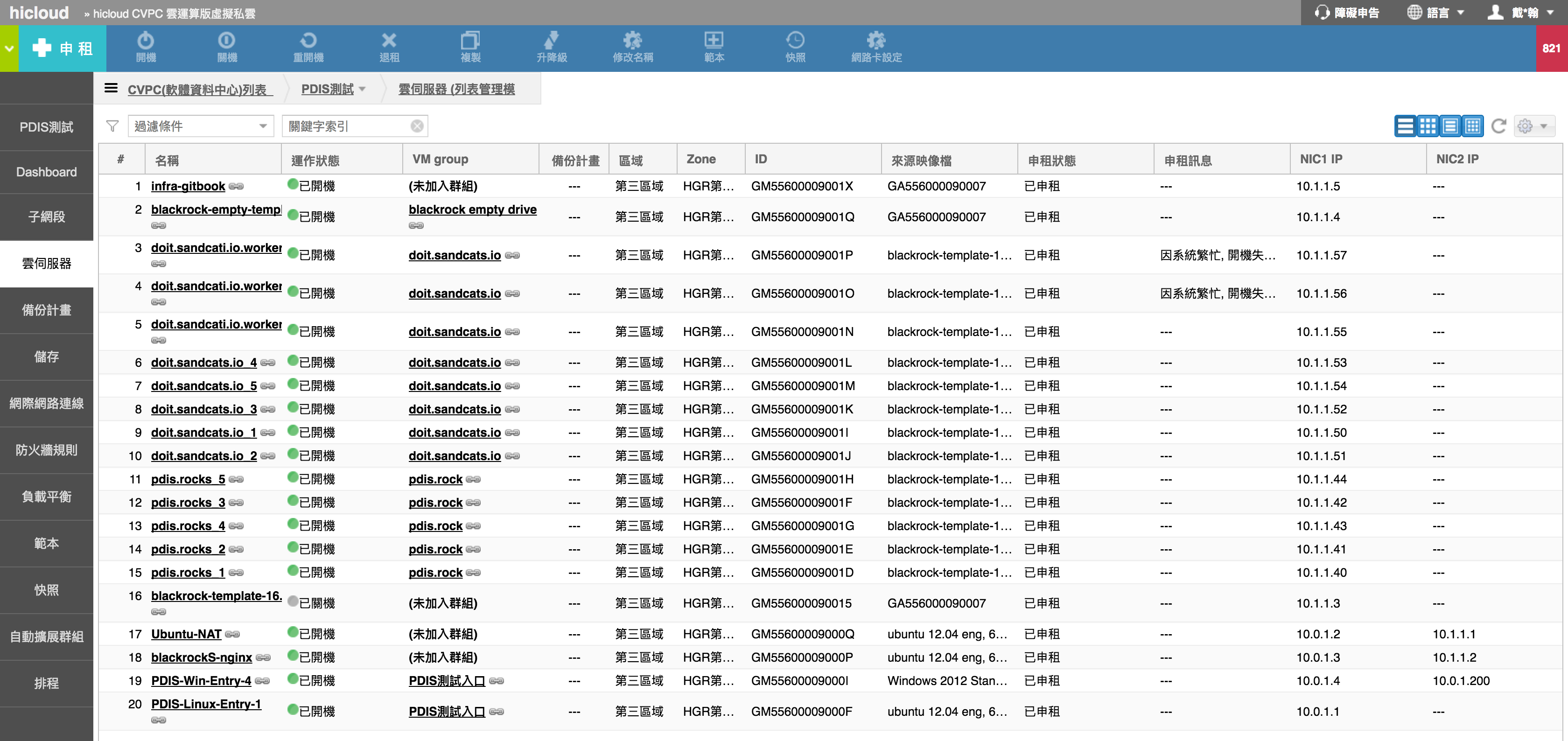Create a disaster prevention information system that will not crash when disaster strikes
Combined with the two-stage data of disaster prevention and relief, a single information inquiry portal is established; the system architecture is changed, the minimum resource operation is used in peacetime, and it can be automatically expanded during the temporary disaster period, and the data of large explosion volume is inquired.
Origin: In the face of the flood season, the difficulty of the existing information system?
Taiwan's climate and terrain are changeable, and natural disasters of large and small scales often occur. How to prevent disasters is an important issue in the national security hierarchy. In particular, every year in the flood season, in the event of a disaster, when the government sets up various types of response centers, the agencies at all levels frequently use the information system to immediately report the disaster situation, and the people's livelihood-related enterprises and facilities also use the information system to report disaster damage and recovery plans to prevent disasters. The primary function of the information system is as an information aid to government decision-making and appropriate contingency measures. On the other hand, just as the previous PDIS participated in the Vegetable Information Integration Platform, the information system that was originally used as a decision-making aid must also be converted into integration under the concept of an open government. Multi-information, publicly accessible, and easy-to-use information platform. In particular, disaster prevention is related to the people’s property and property. If the public can access the disaster information through the information system, it will not only satisfy the rights of the people, but also allow the people to take appropriate measures to avoid disasters and reduce the risk loss. Reduce the burden of government disaster prevention.
The disaster prevention information system has its own characteristics. When disasters occur, such as when a typhoon strikes, the use of disasters comes to a peak. However, in the absence of disasters, the system is cold and cold. This is a bit like the rivers in Taiwan. "It’s raining, it’s raining, and the disaster prevention information system is such a "wild river" system.
In the existing system, disaster prevention and disaster relief are under the responsibility of the National Disaster Prevention and Rescue Technology Center (NCDR) and the Fire Department of the Ministry of the Interior. Before the disaster, the public can go to the “Disaster Information Network” provided by the NCDR to check the disaster prevention information. Once a disaster occurs and enters the disaster prevention phase, the latest news will be announced at the "Disaster Intelligence Station" provided by the Fire Department. This two sets of system switching at different stages will not be friendly to the average user unless you are familiar with the government operation. To get the information you want, you need to invite the inter-departmental research system to integrate.
The problem that the main authorities and PDIS need to face together is how to combine the two stages of disaster prevention and relief data to establish a single information query portal; and how to change the system architecture, use the minimum resources in peacetime, and can come at the disaster The period is automatically expanded, and the data of the large explosion amount is inquired.
The front desk is consistent, the background integration
With the assistance of the Office of the Science and Technology Conference of the Executive Yuan, many meetings will be held. After the PDIS, the Fire Department and the NCDR and the various units and the factory business seminars, they will gradually form a certain direction. In order to achieve the goal of providing information in a single interface, the Fire Department and the NCDR system will gradually integrate. The overall integrated work plan can be divided into two parts: the front-end "user interface" and the back-end "data provision".
The front-end "user interface" should combine the advantages of the original two systems to meet the needs of different users: the fire department "Disaster Information Station" presents a simple line of text and divides the blocks on the screen, which is conducive to Quickly query data; NCDR "Disaster Emotional Network" interactive visual interface, using data and map interactive presentation, is conducive to a quick understanding of the scope of disasters. Therefore, in the future, the two system interfaces on the left side of the following diagram will be merged into the system interface on the right side of the figure, and, under the premise of funding, gradually integrate toward the NCDR user interface which is more advantageous for interaction.
However, the original design of the NCDR system has a good data query flexibility, so it consumes a lot of computing resources, and I am afraid that it cannot afford to use the peak of the flood season. In order to be able to provide a large number of people in the flood season, especially in the event of a disaster, and even in response to the instantaneous explosion, NCDR and PDIS decided to change the system architecture after technical discussion. The system architecture in which the various query results are stored in advance as a file, and the hard disk space is exchanged for computing resources, and the performance is refined, and the system can be horizontally expanded at the peak period.
In the "Data Provisioning" section of the backend, the data formats required by the two systems are not identical. In addition to the common sharing format, it also emphasizes the need to provide flexible expansion of the field to ensure that in the process of data exchange, the data content will not be lost due to the formalization of the data.

Using cloud technology to reduce costs and improve usability
As mentioned above, the disaster prevention information system is a "ridiculous type" system. When a disaster occurs, the system usage suddenly increases suddenly. At the time of the disaster, the system was almost useless. For such a feature, it is possible to directly purchase a server to build, so that when the disaster occurs, it can withstand a large amount of load, but it must purchase a lot of computing resources. However, disasters are not the norm. If too many fixed resources are invested and they are usually idle, this is not economical. In the long-term situation of building a disaster prevention information system, it is facing such a dilemma.
PDIS believes that the industry's cloud computing technology is very suitable for dealing with such situations. It is happening that Chunghwa Telecom will launch the HiCloud Govcloud Region (HGR), which is tested first. It is expected to be officially launched in September 2017, and PDIS is just one of the test users. Therefore, PDIS cooperates with NCDR colleagues and vendors to test the “Disaster Information Network-Volkswagen Edition” on HGR to ensure that cloud resources can be used when disasters occur. On the other hand, cloud computing technology is not unique to Chunghwa Telecom. The process will also note that in the future it will not depend on any vendor's cloud services. In short, HGR and Common Infrastructure-as-a-Service (IaaS) vendors provide computing resources that can be dynamically scaled up or down. They use large amounts of resources to carry people's queries when disasters occur, and generally use minimal resources to maintain operations. According to the actual usage (pay-as-you-go), the cost of maintenance can be expected to be greatly reduced, but at the same time it can guarantee the system availability during peak hours. The disaster prevention information system uses such technology and believes it can be met. System requirements can achieve the lowest cost and most efficient goals.

Conclusion: Before and after separation, appropriate information technology based on local conditions
Overall, the disaster prevention information system is the PDIS team following the "food price open information integration platform", and once again cooperate with relevant ministries, A large information system with multiple sources (inter-departmental) will be integrated, while still achieving the policy goal of providing general public enquiries on a regular basis. Therefore, in addition to the technical requirements, the ease of use of the interface must be enhanced from the perspective of the user. However, unlike the "Public Price Information Open Integration Platform", the current disaster prevention information system has two front ends, the Fire Department and the NCDR, which provide public enquiries at different stages, so they must be consolidated first.
Secondly, the disaster prevention information system is like the "discount price integration information platform". It needs to integrate data from many different systems. At this time, "separation before and after" plays a very important role - presenting the front-end data (user interface) and back-end data supply, the two are designed separately, which can easily achieve information sharing and exchange, data presentation interface correction and integration, and can make the information system flexible, in order to respond to changes in demand and then increase or decrease functions. .
Further, a "ridiculous" system like the Disaster Relief Information System is not uncommon in government departments. "Dish price open information integration platform, which means that if the natural disasters cause fluctuations in the price of vegetables, the demand for system queries will increase in a short period of time. however, the price query only needs to read the static data, so the cdn technology (content delivery network) can solve the traffic problem.
The disaster prevention information system is not the same. Whether it is weather, road conditions or hydropower, etc., it must be able to be dynamically and quickly updated, in order to meet the information needs of disaster prevention. The traditional way is to rely on the establishment of a large number of servers, but the use of "tenancy" instead of "buy" cloud service model can not only solve this problem, but also effectively reduce the cost of construction and maintenance, even because of the purchase of self-purchasing There may be a gap between planning and demand, and cloud services can be flexibly expanded to ensure the quality of services.
PDIS believes that these collaboration experiences will also help other government information systems facing similar problems to improve optimization in the future.
Related Links
-
2017-02-14 Discuss this case with Rufus Pollock (English verbatim record)
-
2017-02-14 Cloud Office EMIC Vendor Conference (Verbatim Record)
2017 2017-03 -02 Disaster Prevention System Information Integration Conference (Verbatim Record)
- 2017-05-23 Investing in Public Welfare Technology (Verbatim Record)
 (This work is licensed under a Creative Commons Attribution 4.0 International License.)
(This work is licensed under a Creative Commons Attribution 4.0 International License.)